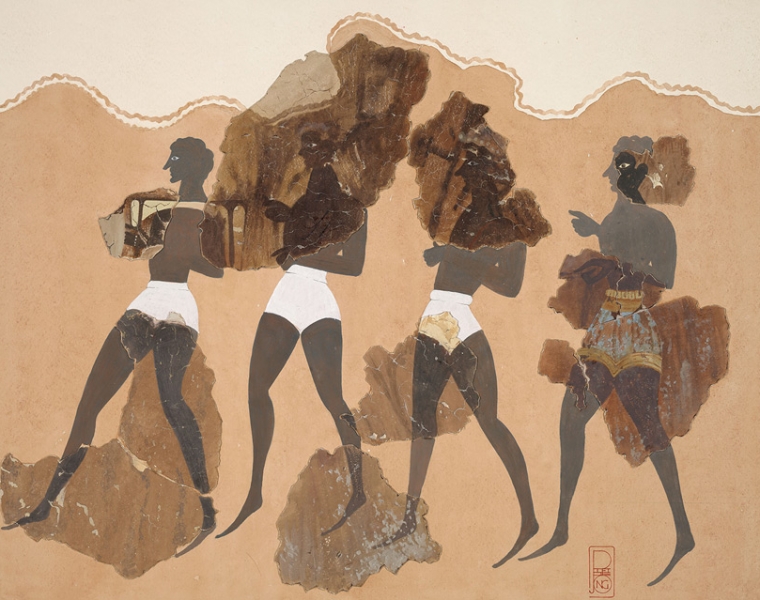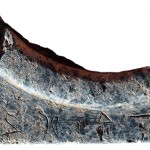A Lost Mycenaean Fresco Fragment Re-Examined
Yannis Galanakis, Emily Catherine Egan
This article examines an important wall painting fragment purportedly found in the megaron of the Late Bronze Age palace at Mycenae in 1893. Originally published in Russian in 1897, the fragment depicts a right-facing mid-size male figure with stylistic affinities to processional figures subsequently excavated on Crete and the Greek mainland. Despite its apparent iconographic and historical significance, the painting has received limited attention in Aegean literature. Below, the thrilling yet murky history of the fragment’s discovery is assembled from public and private testimonies by the eminent individuals involved. Possible reconstructions of the fragment are presented, and its iconography is explored in light of current chronologies and known comparanda. It is argued that, while many details of the fragment’s biography remain ambiguous, the potential value of the find as a rare representation of a processing man in a mainland palatial context is substantial.

Galanakis Y., Egan E.C. 2017, A Lost Mycenaean Fresco Fragment Re-Examined, SMEA NS 3, 83-104






